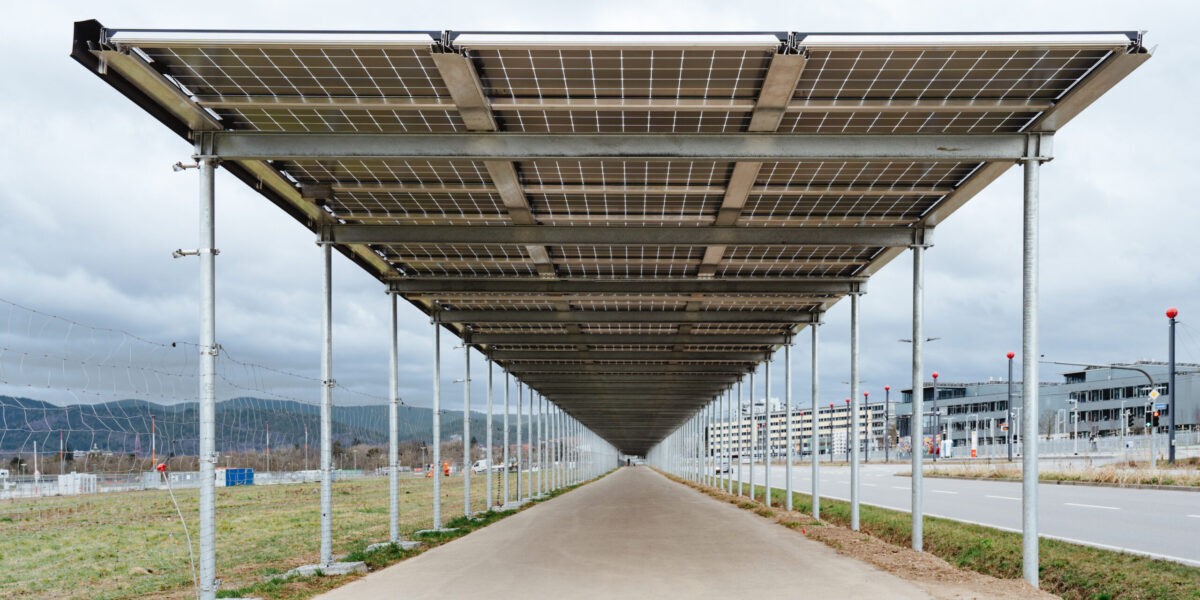Can EVs and solar save the world? The IEA thinks so


The International Energy Agency (IEA) released its 2023 Net Zero Roadmap today – here’s what’s happened since 2021 and what must urgently happen before 2030.
EV and solar lead the way
The International Energy Agency’s Net Zero Roadmap sets out what would need to happen in the global energy sector in the years and decades ahead to limit global warming to 1.5C. The IEA debuted the first roadmap in May 2021, and this latest release updates the first roadmap to take into account everything that’s happened in the last two years.
The 2023 Net Zero Roadmap takes into account the post-pandemic economic rebound and the incredible growth in some clean energy technologies but also increased investment in fossil fuels and stubbornly high emissions.
Since 2021, record growth in EV and solar sales, along with planned rollout for new manufacturing capacity, are in line with a pathway toward net zero emissions globally by 2050. That’s a big deal – and pretty good news – because those two technologies alone deliver one-third of the emissions reductions between today and 2030 in the pathway.
In the 2021 roadmap, the IEA projected that technologies not yet on the market would deliver nearly 50% of emissions reductions needed for net zero in 2050. That number of technologies not yet available has now fallen to around 35% in the 2023 update. In other words, the innovations are materializing and being applied.
Going forward, the Net Zero Roadmap says we’re going to have to seriously ramp up this decade to stay on track. Before 2030, the main actions we need to take are as follows:
- Global renewable power capacity must triple.
- The annual rate of energy efficiency improvement must double.
- Sales of EVs and heat pumps must rise sharply.
- Energy sector methane emissions must fall by 75%.
If we achieve these things – and they are achievable if geopolitics are set aside – then we will see more than 80% of the reductions that we need by the end of 2030.
IEA executive director Fatih Birol said:
The good news is we know what we need to do – and how to do it. Our 2023 Net Zero Roadmap, based on the latest data and analysis, shows a path forward.
But we also have a very clear message: Strong international cooperation is crucial to success. Governments need to separate climate from geopolitics, given the scale of the challenge at hand.
Dave Jones, global insights lead at energy think tank Ember, had this to say about the IEA’s 2023 roadmap:
Tripling renewable electricity is the single biggest action required this decade to secure a rapid shift away from fossil fuels. Electricity is the new oil, as clean electrification takes center stage. It requires world leaders to think big and build big. It’s not rocket science, but it does require the determination and urgency of a space race. Importantly, emerging economies need investment to enable them to enter the race, which ultimately will benefit us all.
City Dwellers’s Take
What’s also interesting to see in the 227-page 2023 roadmap are the technologies that got downgraded in climate mitigation scenarios. The IEA states that hydrogen and hydrogen-based fuels, sustainable bioenergy, and carbon capture, utilization, and storage (CCUS) are critical to achieving net zero emissions but have all underperformed. Its perspective on CCUS, for example, is largely “one of unmet expectations.”
It’s a waste of time to include technologies in the climate change “space race” that haven’t made much or any progress. Green hydrogen hasn’t moved with the speed and efficacy of electrification, and CCUS – well, we at City Dwellers are at the point where we’ll believe CCUS when we see it.
It’s pretty clear what the world has to do: Keep the fossil fuels in the ground and electrify. Renewables and EVs will give us what we need to avoid the point of no return.
Read more: Global electric car sales’ ‘explosive growth’ – in numbers
Photo: Badenova
If you’re an electric vehicle owner, charge up your car at home with rooftop solar panels. To make sure you find a trusted, reliable solar installer near you that offers competitive pricing on solar, check out EnergySage, a free service that makes it easy for you to go solar. They have hundreds of pre-vetted solar installers competing for your business, ensuring you get high-quality solutions and save 20-30% compared to going it alone. Plus, it’s free to use, and you won’t get sales calls until you select an installer and share your phone number with them.
Your personalized solar quotes are easy to compare online, and you’ll get access to unbiased Energy Advisers to help you every step of the way. Get started here. –ad*
FTC: We use income earning auto affiliate links. More.